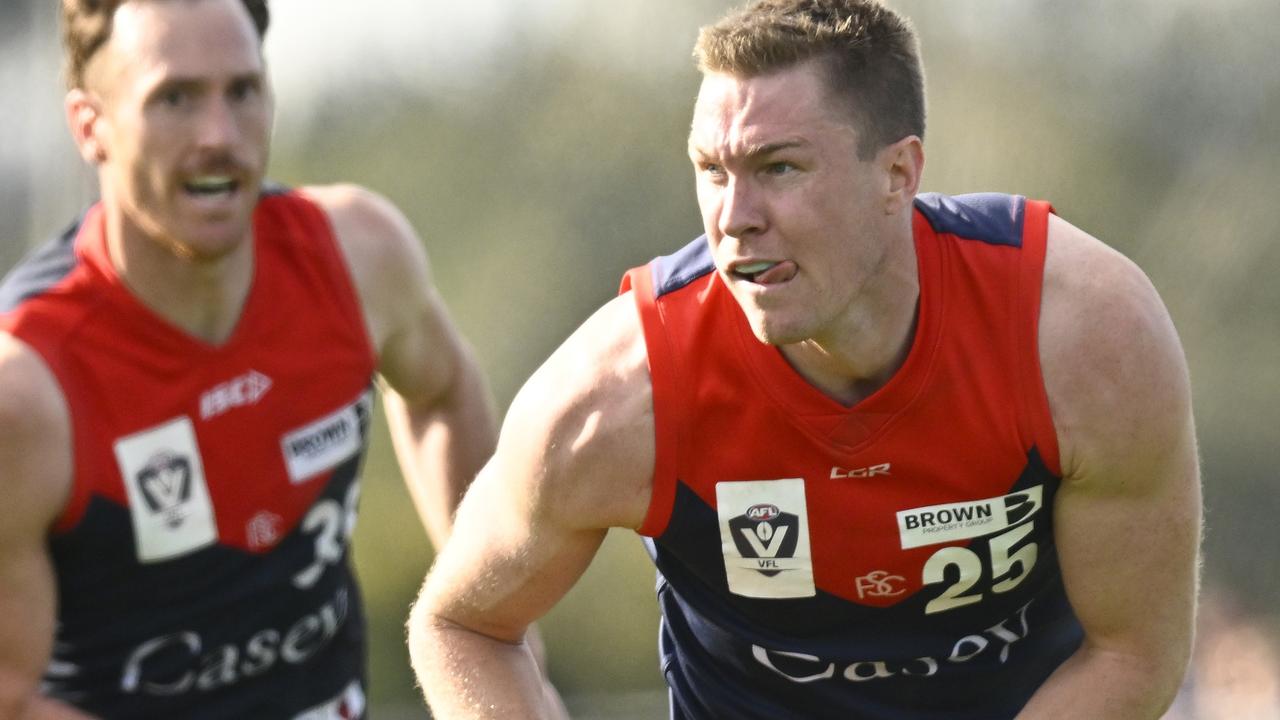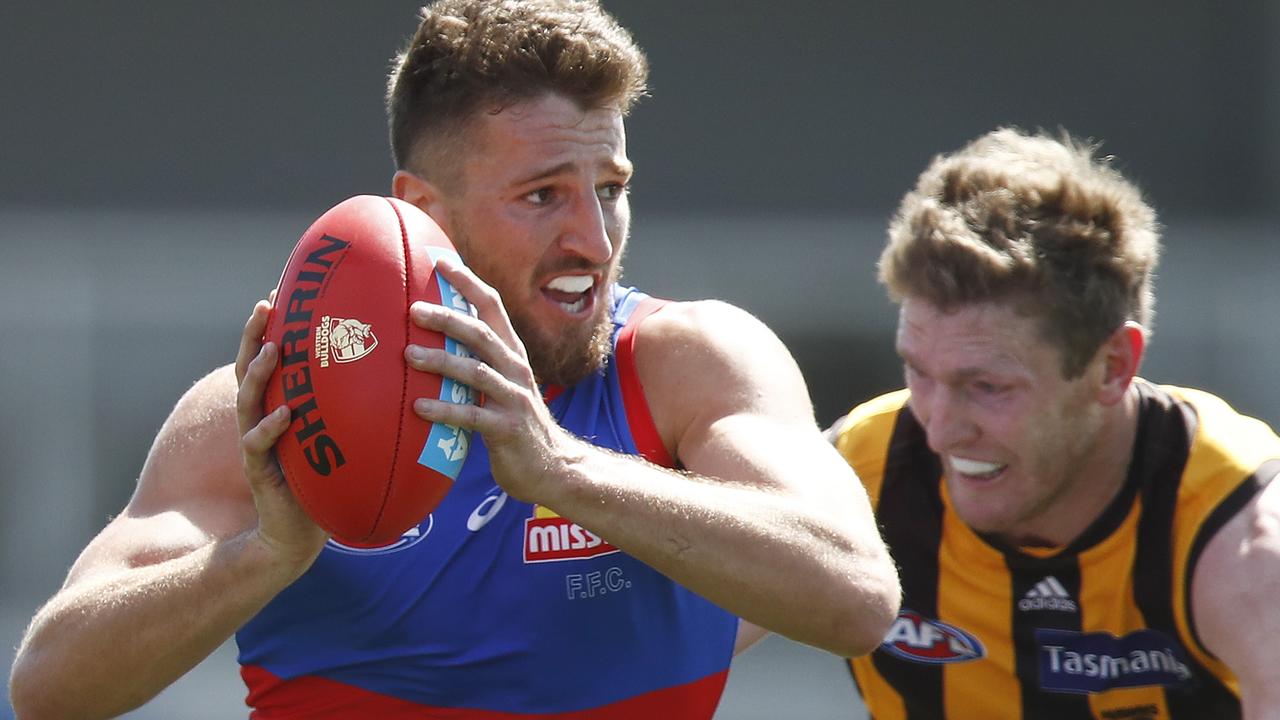Hawthorn’s ball movement in 2018 is the latest spark of genius from the mind of Alastair Clarkson
IT’S TIME to recognise the genius of the 2018 version of Alastair Clarkson. This may be the best season of his extremely successful coaching tenure, writes David King.
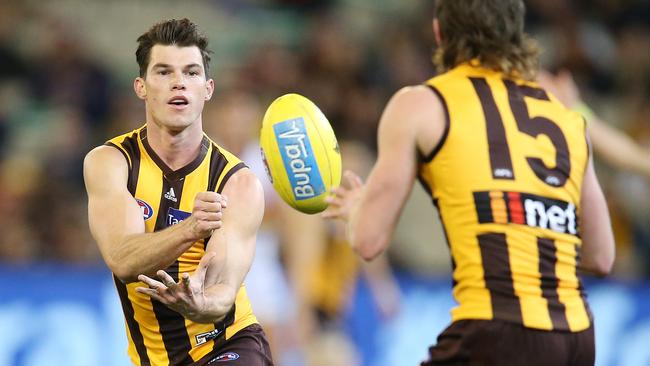
David King
Don't miss out on the headlines from David King. Followed categories will be added to My News.
IT’S TIME to recognise the genius of the 2018 version of Alastair Clarkson.
This may be the best season of his extremely successful coaching tenure, particularly from a tactical point of view given playing stocks available.
When Cyril Rioli vacated the premises most football lovers expected that to be the start of the end for the 2018 finals campaign, while this great club moved to regenerate towards its next premiership tilt.
LOCKED IN: SILK RE-SIGNS FOR 18th SEASON
ROUND 20: RISING STAR JUDGES WILD ABOUT HARRY
REPORT: HAWKS EAT PRESSURE TO BEAT BOMBERS
While all the public conversations channel their energy around the principle question of whether to tag Tom Mitchell or not, Hawthorn’s true weapon is going largely unnoticed.
It’s not Isaac Smith, Jaeger O’Meara or even Luke Breust. It is sheer tactical brilliance.
The Hawthorn defensive system is far superior to all others, not just this year but since numbers on ball movement have been measured. The best ever.
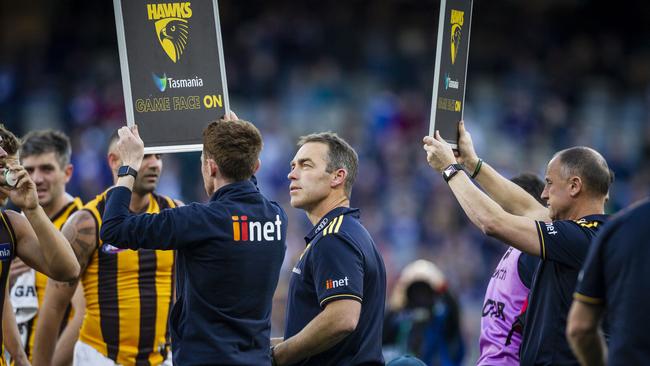
Hawthorn allows its opponents to move the football from the defensive 50m to their forward 50m only 14 per cent of the time.
That’s one in seven opportunities, which saves their inexperienced and undermanned defensive end considerable pressure and/or volume.
How does Alastair do it?
The Hawthorn ball movement plan when in possession is to “build the ball”.
They take ground while controlling the speed of their counter-attack.
Using what the opposition allows - hitting the 20m targets if available, often less - permitting time for the Hawthorn defenders to reassert their positioning and maintain composure behind the play, as they rarely turn over possession through uncontested marking.
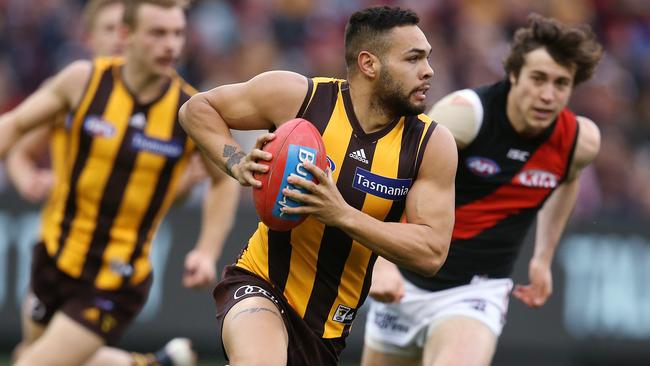
The Hawks understand speed. Nothing happens at breakneck pace or at a speed the average player can’t handle.
St Kilda, Brisbane and Essendon should invest time in studying this model and stem the bleeding on the scoreboard.
All Hawthorn recruits are schooled on understanding the overall game in totality, not just kicks, marks and handballs or how to win a contested possession.
Centre-forward it’s get the ball inside the forward 50m quickly, if possible, but centre-back they ensure organisation behind the ball.
Alastair doesn’t typically hold extra defenders in general play, he trusts the back six to get the job done.
In case of emergency, the blueprint demands break the glass on the Jack Gunston magnet and move him to the backline either as an extra defender or simply one of the back six.
Why Gunston? Because he oozes composure, both as the football enters and by foot as it exits the Hawk defensive end.
The remarkable facet is that the Hawks model is basically executed on a one-on-one matrix while other cellar dwellers still continue trying (and failing) with spatial defensive grids. It doesn’t work because these teams lack experience and don’t have the Hawks’ levels of footy IQ.
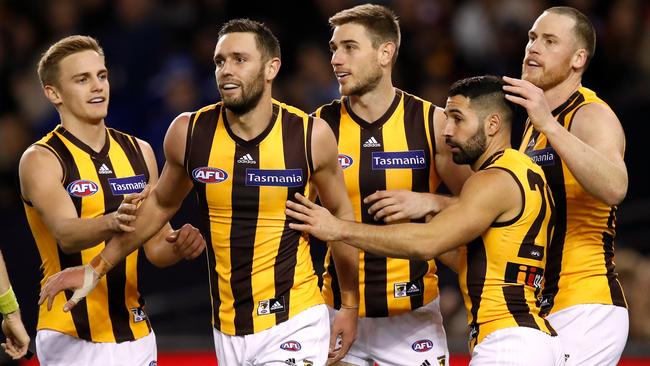
The Hawks generally have the ball in their hands longer than their opponents across the course of the game.
If not, they’re vulnerable — they’ve lost six of seven games when they’ve lost time in possession.
Hawthorn has coughed up possession the fourth least of any team in the defensive half
but because of their penchant to spread wide to the boundary line and effectively make the ground bigger to defend for the opposition, when they do turn the ball over they generally get hurt on the scoreboard.
The Hawks rank poorly at defending opposition inside 50s, the worst of any top-10 team, but the modus operandi is to deny those inside 50s by locking the ball in the Hawthorn forward half.
The Hawks concede the lowest inside 50s per game in the competition, averaging only 46.
This is a large reason why Hawthorn is in the premiership fight, even with a lesser talent base.
Clarkson is a genius. He gives his players the intelligence to understand the overall game.
He doesn’t give them fish, he teaches them how to fish.
Watch every match of every round of the 2018 Toyota AFL Premiership Season. SIGN UP NOW >


